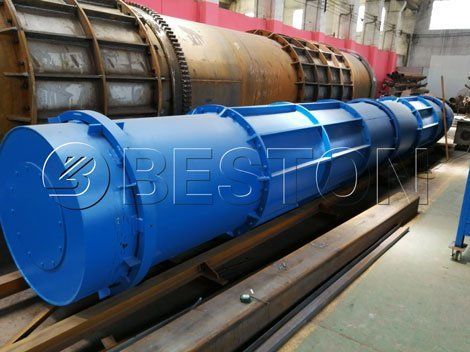How A Rice Husk Carbonization Furnace Can Turn Waste Into Fuel
- By capricornrfyhj dahquoh
- •
- 22 Nov, 2019
- •
This is a subtitle for your new post

Carbonization is one of many techniques utilized to turn biomass, which is leftover products from plants or another living things, into biochar. Biochar is actually a revolutionary substance that burns similarly to coal, however with a tiny part of the pollution. Biochar solves two problems: one, burning coal for energy creates excessive pollution, as well as two, agricultural waste contributing a great deal of mass to landfills.
Biomass like rice husks is usually considered worthless because it is too complex to break down quickly. While many biomass could be rotted and turned to compost, allowing more plants being grown using the nutrients within the biomass, a lot of agricultural byproducts take too much time to biodegrade to be efficient for this specific purpose. Rice husks, coconut shells, corn husks, nut shells, and other hard, sturdy plant matter is actually too difficult to degrade, and must be thrown out.
This is when a carbonization furnace for charcoal comes in. By heating the materials and breaking them down without burning them, the furnace is effective in reducing the biomass into usable, burnable matter called biochar. Biochar, when packed together into briquettes, burns slightly less efficiently than coal, but is a lot cheaper to obtain and produces substantially less pollution.
One strategy of energy generation that is certainly growing in popularity is named coburning. Coburning refers back to the process of burning several different types of materials together, allowing one to find the advantages of both materials. In this instance, coburning means burning biochar and coal concurrently. Coal burns efficiently, and helps to hold the furnace hot, while biochar provides much more energy per dollar and has less environmental impact. By burning both materials as well, energy may be produced that is cheaper, more potent, and cleaner than ordinary coal burning.
Biochar can also be used as fertilizer. It may be spread in soil to improve the nutrition for future crops, by returning the minerals that the plants accustomed to produce the biomass from the beginning. By carbonizing agricultural waste, the useful energy and materials in rice husks and also other refuse might be unlocked for usage.
A carbonization furnace could be used to turn what was once trash in a valuable way to obtain energy or fertilizer. This product, called biochar, can be burned along with coal for cleaner and much more efficient energy, or spread in soil to aid plants grow better. Visit WWW.GREENBESTON.COM if you are interested.
